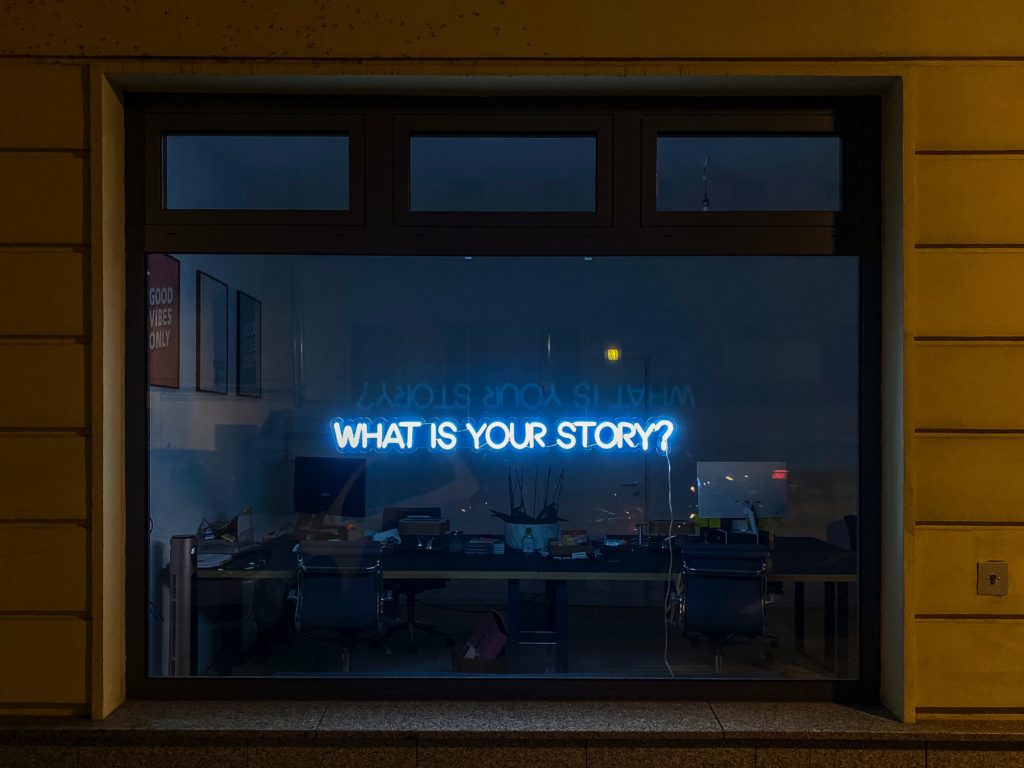Transform your inner narratives to cultivate authentic creative expression.

If you think you see the world as it is, you’re fooling yourself.
You see the world filtered through stories.
Stories that you’ve collected throughout your life. Some of these stories help and inspire, while others hold you back.
But if you can’t see your stories clearly, you become bound by them.
I’ve long harbored many stories about creativity and my ability to create something new. However, only in the past few years have I learned how to take steps to uncover the unhelpful versions of these stories and replace them with something new.
So I wanted to share how to recognize and challenge stories that limit our creativity and then provide actionable help for you to find and develop your creative voice.
How Limiting Stories Crush Creativity
Stories help us make sense of the world. It’s how our mind makes meaning and helps us survive.
In the book “Mind Your Mindset,” authors Michael and Megan Hyatt discuss how this all works. They explain that we tend to perceive events and experiences as cause, story, and effect rather than cause and effect.
In other words, our internal stories create a mental model that we use to explain the world.
Our brains are wired for stories – stories we hear from others and tell ourselves.
Recognizing Limiting Stories
To overcome limiting stories, we must see them.
Some of the future classics that I uncovered and moved beyond (mainly) include such limiters as:
- I’m too old to start something new.
- People won’t understand what I am trying to say.
- I’ll never be as good as [insert talented artist/creator here], so why bother?
- I will alienate friends and family if I change.
And so on. I’ve got thousands of stories like these that tend to hold me back. We all do.
Mine came from my childhood’s murky, chaotic depths, so they largely stayed invisible, where they could do the most damage.
Challenging Limiting Stories
To challenge limiting stories, I’ve had to make them visible.
I’ve tried a few things to make stories visible, but the most immediately valuable technique is journaling.
You don’t need to get too complicated here.
For journaling, just writing down the story suffices. By literally making it so I can see my stories in black and white, I can see them more clearly. I also prefer to do it long-hand (for some reason, adding muscle movement seems to make things stick better).
What is interesting is that as you journal, not only do you get to see your stories in the whole light of day, but you get to interrogate them a little more.
For each of my stories, I find unquestioned assumptions that underpin the story. Then, once I get to that assumption, I can shift the story built on top of it.
For instance, if I look at the story “I’m too old to start something new,” I find the assumption that there’s an upper limit for creativity, which is complete bullshit and not a belief that I consciously subscribe to. But for a long time, I behaved as if this was true.
Writing it all down made the contradiction apparent to me.
Transcending Limiting Stories Changes Culture for the Better
As a little postscript here, I will add that changing our limiting stories and developing a creative voice has a significant societal impact.
Transcending our stories shifts culture for the better.
The most potent artists, musicians, and creators all seem to defy expectations. They move beyond stereotypes or default roles and show everyone a new way to live or be in the world.
To do that, they had to transcend the stories placed upon them, just like I am talking about here.
Leave a Reply